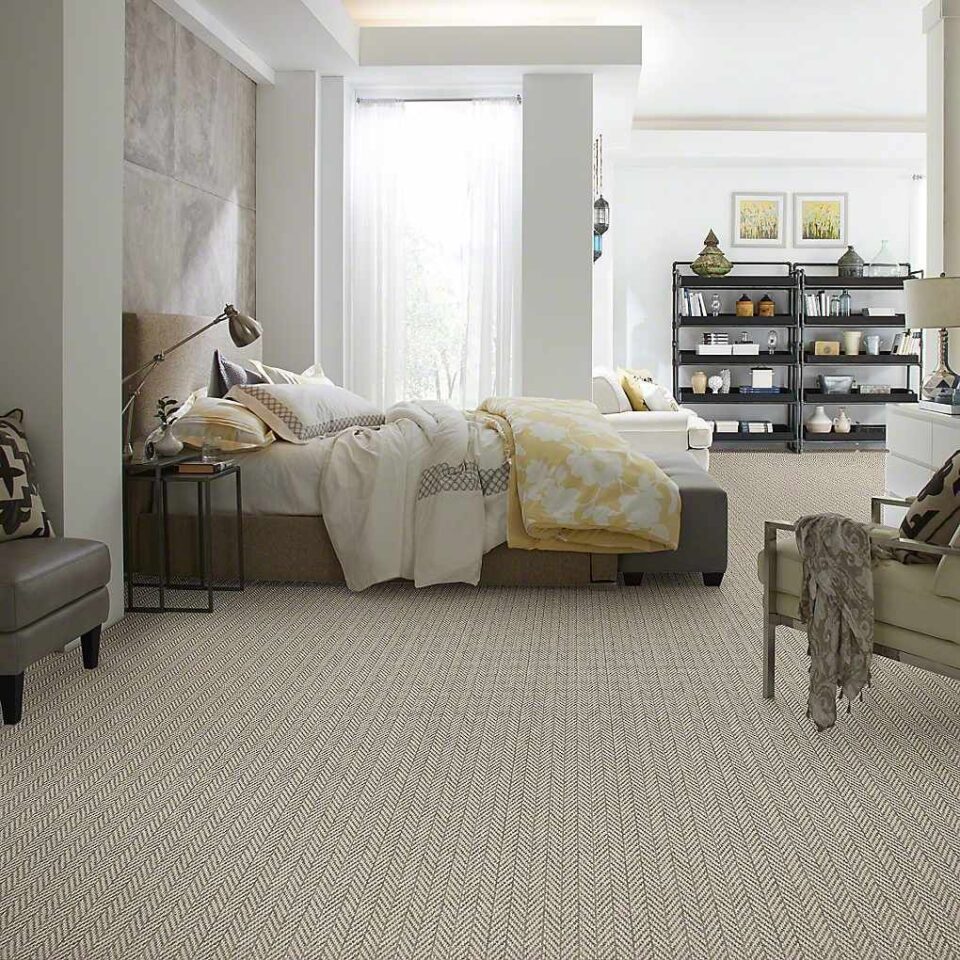Layered flooring is more than just a trend—it’s a creative design approach that adds depth, texture, and personality to any space. Combining area rugs with wall-to-wall carpet allows homeowners and interior designers to transform ordinary rooms into cozy, visually striking environments. While it may seem tricky at first, mastering the art of layering rugs and carpets can be an exciting way to showcase your personal style while maximizing comfort and functionality.
Why Layered Flooring Works
Layered flooring is a strategic design choice that offers both aesthetic and practical benefits. From a visual perspective, layering creates dimension and interest. A single carpet can sometimes feel flat or monotonous, but adding one or more rugs on top introduces patterns, colors, and textures that draw the eye. It can also serve as a subtle way to delineate spaces in an open-plan home. For instance, placing an area rug over a neutral wall-to-wall carpet can define a seating area or dining space without the need for physical partitions.
Functionally, layered flooring provides extra comfort and warmth underfoot. High-quality carpets already offer cushioning, but adding an area rug introduces another layer of softness and insulation. This is especially helpful in colder climates or homes with hardwood or tile flooring underneath. Layered rugs can also help protect carpets from heavy foot traffic, spills, or wear, effectively extending their lifespan.
Choosing the Right Carpets and Rugs
The key to successful layered flooring is balance. Start by selecting your base carpet. Neutral tones such as beige, gray, or soft pastels work well as a foundation because they allow layered rugs to stand out without overwhelming the space. If your base carpet already has a pattern, consider a rug with a simpler design, so the combination doesn’t feel chaotic.
Area rugs, on the other hand, offer more freedom for experimentation. You can play with bold geometric patterns, rich colors, or textured materials like shag, wool, or jute. The idea is to create contrast without clashing. One popular approach is the “monochromatic layer,” where the rug and carpet share similar color families but differ in texture or pattern. Another approach is the “statement layer,” where a vibrant rug becomes the focal point against a more subdued carpet background.
Practical Tips for Layering Rugs on Carpets
Size Matters: Ensure the rug is proportionate to the space it’s meant to define. For a living room, the rug should be large enough to fit under the front legs of sofas and chairs. In smaller areas, a smaller accent rug can be used to highlight a particular feature, such as a reading nook.
Experiment with Shapes: Don’t feel confined to rectangular rugs. Round or oval rugs can soften the geometry of a room dominated by rectangular carpets or furniture. Mixing shapes adds an unexpected visual element that keeps the design fresh.
Focus on Texture: Layering isn’t just about colors and patterns; texture plays a huge role. For example, a flatweave rug on top of a plush carpet creates a tactile contrast that’s visually appealing and practical for high-traffic areas.
Anchor Your Furniture: Position your furniture thoughtfully to anchor the layered rugs. Sofas, coffee tables, and beds should sit partially or fully on the top rug, depending on the layout. This helps the layers feel intentional rather than haphazard.
Play with Borders: A common mistake is layering rugs with competing borders or trims. Aim for rugs with simple, clean edges when layering, as this allows the patterns and textures to shine without visual conflict.
Styling Ideas for Different Spaces
- Living Rooms: Use a large neutral carpet as the base and layer a bold patterned rug under the coffee table. This creates a central focal point while maintaining harmony with existing furniture.
- Bedrooms: A plush wall-to-wall carpet can be layered with a smaller, vibrant rug at the foot of the bed. This adds color, warmth, and comfort for your feet when getting out of bed.
- Dining Areas: Place a large area rug under the dining table over a neutral carpet. Make sure the rug extends beyond the chairs to prevent them from catching the edges.
- Entryways: Layer a durable, flatweave rug over a neutral carpet near the entrance. This combination handles dirt, traffic, and adds visual interest to the first space guests see.
Maintenance Tips for Layered Flooring
While layered flooring is stylish, it requires some care to maintain its appearance. Vacuum both the base carpet and the top rug regularly. For rugs that shift, use non-slip rug pads to prevent movement and reduce wear. Spot clean spills immediately and schedule deep cleaning for the base carpet periodically. With proper care, layered flooring can remain fresh, vibrant, and inviting for years.
Conclusion
Layering rugs over carpets is a versatile and stylish interior design technique that elevates any room. By combining color, pattern, and texture, you can create spaces that are visually dynamic, cozy, and functional. With thoughtful selection and placement, layered flooring allows homeowners to express their personality while protecting their carpet Abu dhabi and enhancing comfort. Whether you prefer subtle sophistication or bold statements, mastering the art of layered flooring is a surefire way to refresh your home and impress visitors.

